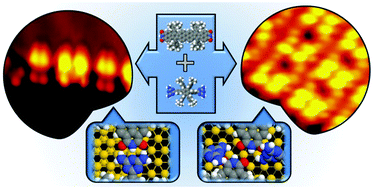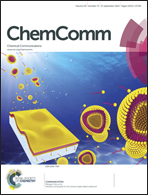Bicomponent hydrogen-bonded nanostructures formed by two complementary molecular Landers on Au(111)†
Abstract
The co-adsorption of two molecular Landers equipped with functional groups capable of forming a complementary triple hydrogen-bonding motif is investigated with scanning tunneling microscopy and molecular mechanics calculations. Surprisingly, the anticipated complementary motif is not realised in 2-D terrace structures, but is observed in 1-D structures at step edges where molecular conformational flexibility is confined.

- This article is part of the themed collection: Scanning Probe Studies of Molecular Systems

 Please wait while we load your content...
Please wait while we load your content...